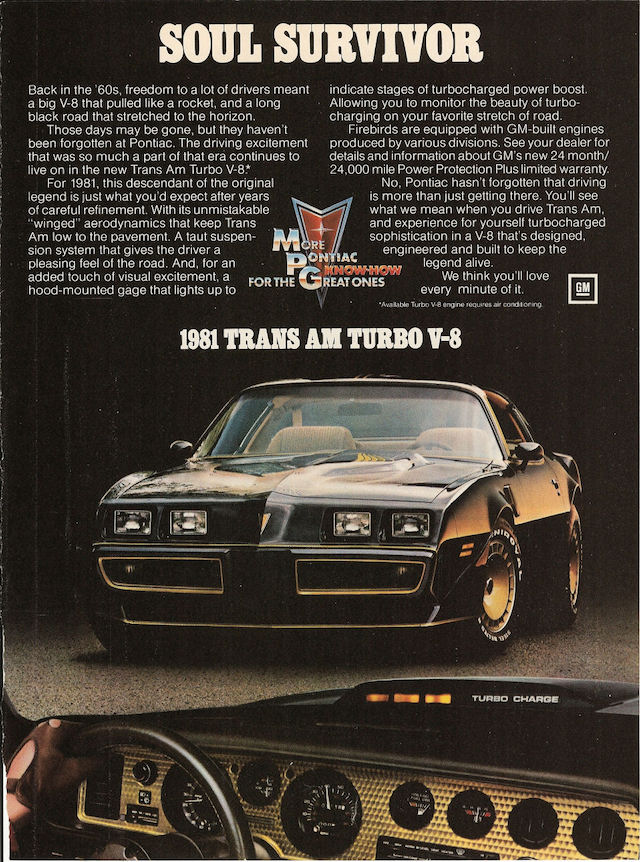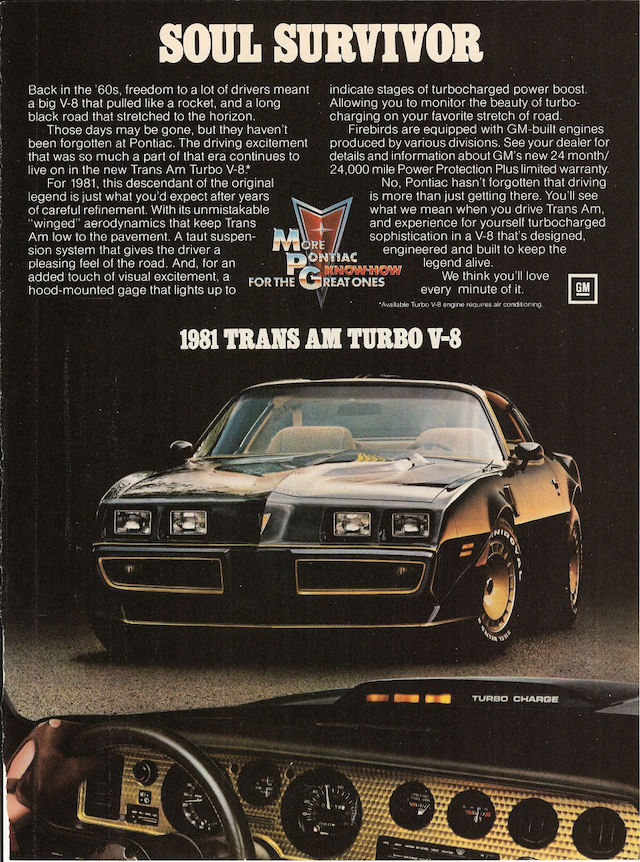By Peter M. DeLorenzo
Detroit. That I have a deep love of everything Pontiac is properly acknowledged. I grew up immersed in this company – appropriate in the thick of GM’s heyday – and Pontiac played a essential function in both my formative many years and my early marketing occupation. Which is why when GM took the bankruptcy pill in 2008, I was crushingly unhappy to study that the Pontiac Division was a person of the belongings to be jettisoned. (And Hummer, much too, but fortuitously that nameplate has now returned.)
It’s really hard to consider now, but Pontiac was just another GM division back again in the mid-50s. It experienced a lineup of stodgy automobiles, and there was very little to create household about. The division existed underneath the GM company umbrella, but it was decidedly missing in just about all the things when as opposed to GM’s other divisions: Buick, Cadillac, Chevrolet and Oldsmobile. But that would all transform when Bunkie Knudsen was appointed a GM vice president and the division’s normal supervisor in July of 1958. Knudsen was offered the assignment to inject some existence into the division and boost income, and he was supplied carte blanche to do it.
As a reminder, if you have been a GM vice president and divisional general manager back again in the day you were being akin to a potentate managing a smaller place. GM’s divisional typical supervisors experienced immense power with responsibility for engineering, producing, profits and internet marketing. Wondering about that in comparison with how things run nowadays, it does not appear serious, for the reason that it was so substantially different from present-day auto business enterprise it’s like studying from a fairytale book. But make no blunder, it was incredibly real, and GM’s divisional common administrators ended up like giants roaming the earth, swashbuckling their way by means of the working day-to-working day of the business enterprise when building vital, pivotal decisions on the fly. Bear in mind, this was a small business that debuted new vehicles each individual slide with new sheet metal and new features to go with them. Yet again, in comparison with how matters are carried out now, it is just jaw-dropping to contemplate how the business churned back then. Of course, as I have claimed quite a few, several instances prior to, it was a distinctive time and a distinctive era, but GM’s heyday was truly outstanding in that the company soared mainly because of it, even with the bean counters making an attempt to rein things in each and every action of the way.
The only arena in which GM’s divisional standard managers had to consider a phase back again was when working with GM Styling, which was run with an iron fist by style and design legend Monthly bill Mitchell, who inherited the mantle from Harley Earl. The clashes concerning Mitchell and GM’s divisional typical managers ended up legendary, and I will help save those tales for another column. But suffice to say, Mitchell received what he preferred for the most component, even if he experienced to play the divisional normal administrators off from every other to do so.
But back again to Bunkie and Pontiac. His first hires had been two youthful and gifted engineers – Pete Estes from Oldsmobile and John Z. DeLorean from Packard. The charge to DeLorean was incredibly specific: get Pontiac into the overall performance business correct now. And given that Bunkie was a massive racing fanatic, almost everything was on the desk, from NASCAR to drag racing.
And all of a unexpected, hot Pontiacs stuffed with large V8s begun to present up just about everywhere, from Daytona to Pomona. And even in our driveway. Given that Bunkie and his wife were social good friends with my mothers and fathers, Bunkie started out sending the hottest Pontiacs to our residence specially for my mom to travel. Beginning in the summer of 1959, we experienced a series of Bonneville and Catalina convertibles that were constantly brilliant red with a white prime and a bright pink inside. And they were normally equipped with the most popular Pontiac engine at the time, which at to start with were being 389 cu. in. V8s with 3×2-barrell carbs, and inevitably 421 cu.in. V8s. Useless to say, my mother cherished her sizzling Pontiacs. (And my brother and I did, much too, primarily given that he experienced just gotten his license and we would “exercise” mom’s automobiles at each possibility.)
The transformation of the Pontiac Division is a superb portion of GM lore. Pontiacs went from getting practical transportation units to some of the best cars in the market. Offering overall performance engineering and styling that just weren’t offered everywhere else, Pontiac rode a wave of popularity that took the business – and GM – by storm.
I say GM because, bear in mind that component about GM’s divisional vice presidents being akin to potentates of their very own nations? Perfectly, that was correct, till Pontiac – less than Bunkie Knudsen’s tutelage – commenced to upset the pecking purchase in just the firm. Right before Pontiac grew to become a “problem” for the other standard supervisors, the GM divisional hierarchy was clear: Cadillac was up and off to the side luxuriating in its have rarified entire world. Buick was up coming in conditions of prestige, with the tremendous-preferred Chevrolet sucking up all of the air in the area due to the fact of its unbelievable income figures, adopted by Oldsmobile, which just chugged alongside, and then the moribund Pontiac.
At least that is the way it utilized to be ahead of Bunkie and his “pirates” acquired rolling. All of a unexpected, factors had changed. Chevrolet, which pretty much had substantial-general performance advertising and marketing opportunities cornered in GM, was currently being critically pushed by Pontiac on all fronts. Chevrolet operatives turned a lot more incensed with just about every Pontiac foray into their territory, and the intramural battles concerning the two divisions spilled about all the way to GM’s vaunted 14th floor, with whining Chevrolet executives complaining to prime GM execs that Pontiac was intentionally encroaching on Chevy’s territory. As you can visualize, this didn’t sit well with Knudsen and DeLorean & Co. The increasing profits figures, nevertheless, ended up in Pontiac’s favor so GM’s top rated execs fairly a great deal let Pontiac go, which additional even a lot more gasoline to Chevy’s fire.
Then, in 1963, when GM issued its official ban from the participation in racing as corporate plan (a monumentally chicken-shit conclusion, by the way), the divisional common administrators experienced to comply. (This is when Zora Arkus-Duntov, alternatively than destroying the Corvette Grand Sports, delivered them to reliable racer good friends of the enterprise, for in essence free of charge. And the company’s deeply embedded romance with Jim Hall’s Chaparral automobiles went entirely underground.)
The very little-identified collateral harm from that anti-racing ban was a GM interior edict that prohibited selected sized V8 from getting set in “smaller” vehicles, which is a joke taking into consideration these smaller sized autos have been big by today’s benchmarks. The Chevrolet operatives dutifully complied with the edict, although Pontiac operatives, led by DeLorean and Invoice Collins – the gifted engineer who deserves most of the credit rating for this subsequent piece of automotive background – resolved to go in another route. In advance of the racing ban, Collins had been fast paced stuffing Pontiac’s 389-cu.in. V8s into “intermediate” Le Mans bodies, and the final result was, unnecessary to say, magical. But when the edict took effect, Pontiac was exclusively ordered not to stuff a V8 into a Le Mans to make it into a new Pontiac model.
Then, a bit of genius. Pontiac operatives resolved to get around the ban by producing the “GTO” a new possibility offer on the 1964 Pontiac Le Mans. And the rest, as they say, is automotive historical past, as the authentic “muscle” vehicle was born. Chevrolet operatives have been apoplectic, but by the time GM company bought wind of what was happening, the GTO alternative experienced develop into a single of the most sought-following significant-effectiveness selection deals in the industry. And by 1966 it turned its have different design.
Pontiac was purple-scorching, with its exclusive manufacturer of higher-functionality engineering and some of GM Styling’s best layouts coming in wave immediately after wave. From there, Pontiac would pile achievement upon success, achieving, at 1 issue, three million in yearly gross sales. The rebels out in Pontiac, Michigan, had gained.
And nearly the best part? Pontiac was supported by sensational marketing, evidently some of the very best and most unforgettable promoting in the motor vehicle small business at the time. That pissed off Chevrolet’s advertisement agency – Campbell-Ewald – on a regular basis, which designed it even superior.
As for the intramural battle concerning Chevrolet and Pontiac, it ongoing. Pontiac came out with the Grand Prix in 1962, and the extended-nosed ’69 model pushed by DeLorean was an additional substantial hit. Chevrolet came out with the Camaro in 1967, but the Pontiac Firebird to some, was superior seeking. The ’70 Camaro, which was extraordinary in its very own right, was undercut by the magnificent ‘70 Pontiac Firebird Trans-Am and Firebird Method. As late as 1984, when Pontiac arrived out with the mid-engine Fiero, the battle ongoing. Chevrolet insisted that it could not encroach on Corvette territory, so the Fiero was limited to a 4-cylinder at intro and acquired a V6 proper prior to it was dropped. The 2nd-generation Fiero, which I had the satisfaction of viewing, experienced “Corvette-killer” penned all in excess of it, but there was basically no way Chevrolet operatives were being going to enable it to see the mild of working day, so they lobbied against it intensely, and it under no circumstances did.
The Pontiac tale is well worth telling. And it’s not just since of the fabulous cars and trucks and nameplates like Bonneville, Catalina, Fiero, Firebird, Grand Prix, GTO and Le Mans. It is since a bunch of maverick Correct Believers thumbed their noses at the corporate inertia that threatened to overrun GM at the time and dared to go up versus an intramural corporate rival to supply some of the finest and most unforgettable devices to arrive out of Detroit.
I had the pleasure of functioning on Pontiac advertising at D’Arcy MacManus & Masius from 1980-1985, and I will under no circumstances fail to remember it. Even nevertheless the small business was speedily switching and Pontiac was starting to reduce its identity in the GM company monolith, the spirit of the previous ad greats that arrived prior to me and my advert colleagues was as intensive, lively and visceral as it could be. And we worked to make them very pleased each individual damn day.
Is this a plea for GM to resurrect Pontiac? That is a really hard “no.” Pontiac existed in a fleeting second in time and remaining its indelible mark on automotive history – never to be repeated, but never to be forgotten.
And that is the Large-Octane Real truth for this 7 days.
 (Pontiac)
(Pontiac)
Editor’s Observe: This is Peter’s well known advert for the 1981 Pontiac Trans Am Turbo V-8. As Peter states, “It was a various time and a unique period.” More true terms ended up hardly ever spoken. -WG

